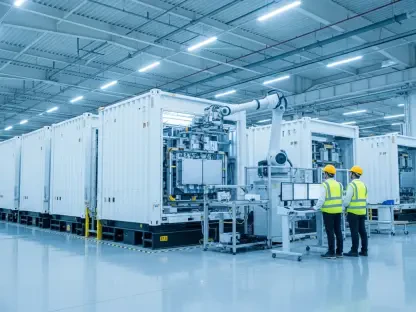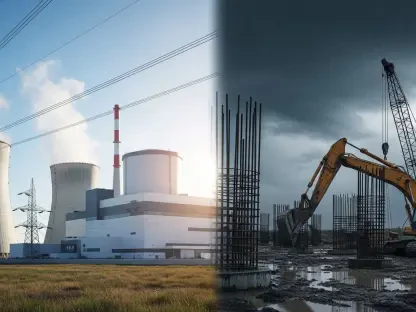In the Hadramout Governorate of Yemen, a significant development has taken place with the installation of solar energy systems in 17 schools located in Mukalla, Tarim, and Al-Qatn. This initiative, supported by the Strengthening Institutional and Economic Resilience in Yemen (SIERY) Project funded by the European Union, aims to address chronic energy shortages that have long impeded the functionality of the education sector in the governorate. The primary objective is to enhance learning environments and operational efficiency by ensuring a reliable and sustainable source of electricity.
Addressing Chronic Energy Shortages
Impact of Power Outages on Schools
Prior to the installation of solar energy systems, schools in Hadramout faced severe disruptions due to frequent and prolonged power outages. Intisar, the principal of a school in Mukalla, described the adverse effects of power cuts on school activities. Administrative tasks and essential functions, such as printing exams, were delayed, sometimes requiring staff to remain at school until late at night to await the restoration of electricity. These disruptions caused significant stress for both teachers and administrative staff, adversely impacting the school’s ability to maintain a consistent and productive schedule.
The lack of reliable electricity also made classrooms uncomfortable and unsafe, particularly during sweltering summer months. The intense heat, combined with the absence of power, led to severe health issues for students, with several fainting each day due to the stifling conditions. As a result, academic performance declined, and students’ motivation and retention suffered in the face of these challenging circumstances. The educational environment became less conducive to learning, further compounding the challenges faced by administrators and teachers in effectively delivering education.
Health and Safety Concerns
In addition to disrupting educational activities, the erratic power supply posed serious health and safety risks. Classrooms became unbearably hot, especially in the summer months, leading to various health issues among students and staff. The intense heat without air conditioning or fans resulted in heat exhaustion and dehydration, causing students to faint frequently. These conditions not only affected students’ health but also their ability to concentrate and actively participate in lessons, leading to a noticeable decline in academic performance and engagement.
The lack of a reliable power supply also meant that schools often had to function without adequate lighting, especially in the early mornings and late afternoons. This created unsafe conditions, particularly in emergency situations where visibility is crucial. The overall stress caused by these circumstances took a toll on both students and staff, making it imperative for local authorities to find a sustainable solution to the chronic energy shortages that plagued the region’s schools.
Implementation of Solar Energy Systems
Local Authorities’ Role
Recognizing the pressing need for a sustainable solution, local authorities in Hadramout prioritized the installation of solar energy systems as part of their resilience and recovery plan. Ahmad, the Head of the Ministry of Education Office in Mukalla, reflected on the numerous complaints received from schools regarding power outages. After participating in capacity-building workshops supported by the SIERY Project, local authorities identified the provision of solar energy systems in schools as a critical component of their strategy to address these challenges.
The involvement of local authorities was crucial in the successful implementation of the project. Their efforts included not only prioritizing the need for solar power but also securing funding and coordinating with various stakeholders to ensure the smooth execution of the initiative. With the support of capacity-building workshops, local authorities were equipped with the knowledge and skills needed to oversee the installation process and manage the new energy systems effectively. This collaborative approach ensured that the schools received the necessary infrastructure to operate efficiently and sustainably.
Design and Sustainability
The solar power systems installed in these 17 schools are designed to include energy-efficient appliances, ensuring sustainability and reducing reliance on costly fuel-powered generators. This shift has not only resulted in cost savings for the schools but also provided an environmental benefit by decreasing the use of fossil fuels. The impact of the solar energy systems has been notable, with teachers and students alike observing significant improvements in the learning environment.
The energy-efficient design of the solar systems includes features such as LED lighting and energy-saving fans, further enhancing their sustainability. By reducing the need for traditional fuel generators, the schools have also minimized their carbon footprint, contributing to broader environmental conservation efforts. The reliability of solar power has allowed schools to maintain a consistent schedule, with uninterrupted administrative functions and classroom activities. Teachers have reported that the improved conditions have led to a more conducive learning environment, with fewer disruptions and a more comfortable atmosphere for both students and staff.
Positive Outcomes and Future Prospects
Enhanced Learning Environment
Ms. Arwa, a teacher at one of the schools, highlighted the positive changes, noting that students are more motivated, better understand their lessons, and that teachers can deliver lessons more effectively. Similarly, Nabat, a student, expressed appreciation for the improved conditions, particularly during the summer months when the classrooms were previously unbearable. The enhanced learning environment has had a ripple effect, leading to better academic performance, improved student attendance, and a more positive school experience overall.
The installation of solar energy systems has also enabled schools to extend their hours of operation, allowing for after-school programs and extracurricular activities that were previously hindered by power shortages. This has provided students with more opportunities for holistic development and learning. The positive feedback from both teachers and students underscores the transformative impact of having a reliable and sustainable energy source, which has fundamentally changed the way education is delivered and received in these schools.
Integration of Digital Tools
Beyond improving the physical conditions of the schools, the reliable energy supply has enabled the integration of digital tools in classrooms. This includes the use of computers and the Internet, which were previously unavailable due to frequent power interruptions. These digital resources are expected to enhance the quality of education in the long term by supporting digital learning initiatives and fostering a more interactive and engaging learning environment.
The availability of digital tools has opened up new avenues for teaching and learning, allowing educators to incorporate multimedia resources and interactive content into their lessons. This has made learning more engaging and accessible for students, who can now benefit from a variety of educational technologies. The integration of these tools is also expected to better prepare students for a digital world, equipping them with essential skills for future employment and further education. The long-term benefits of this technological integration are likely to contribute significantly to the overall improvement of educational outcomes in the region.
Commitment to Sustainable Education
Local Authorities’ Vision
The role of local authorities in Hadramout has been central to the success of this project. Their decision to prioritize solar energy as a solution to power shortages in schools reflects a comprehensive understanding of the challenges facing the education sector. Ahmad, the Head of the Ministry of Education Office in Tarim, emphasized the importance of the project, stating that it allows educational work to be completed more efficiently and ensures that the educational needs of students are met sustainably.
Local authorities have demonstrated a strong commitment to sustainable education by making strategic decisions that prioritize long-term solutions over short-term fixes. Their vision has been instrumental in driving the project forward and ensuring its successful implementation. By aligning their efforts with broader resilience and recovery plans, they have created a framework for continuous improvement and sustainability in the education sector. The collaboration between various stakeholders, including local authorities, schools, and international partners, has been key to achieving the project’s objectives and ensuring its long-term impact.
Alignment with Global Goals
In Yemen’s Hadramout Governorate, a notable advancement has occurred with the installation of solar energy systems in 17 schools across Mukalla, Tarim, and Al-Qatn. This effort is part of the Strengthening Institutional and Economic Resilience in Yemen (SIERY) Project, which is funded by the European Union. The project’s main goal is to tackle chronic energy shortages that have long hindered the education sector’s efficiency and functionality in the governorate. By providing a dependable and sustainable electricity supply, the initiative seeks to improve learning environments and boost operational effectiveness in these schools. This development is pivotal for the region, as reliable energy is essential for modern education. Enhanced access to electricity not only powers classrooms but also supports administrative tasks, enabling a more comprehensive educational experience. Implementing solar energy is a forward-thinking solution that promises long-term benefits for both students and educators, ultimately aiming to create a more resilient and effective education system in Hadramout.









